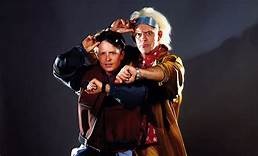I came to believe that a leader isn’t good because they’re right; they’re good because they’re willing to learn and to trust. ~Four-star General Stanley McChrystal

Given it is Veteran’s Day this week, it seemed only fitting to learn about servant leadership from a Four-star General. Thanks to Hollywood, many military images have been burned into our minds. When we think of military leadership we tend to think of officers shouting orders, and rank dictating process and strategy. Like much of Hollywood, this doesn’t reflect reality but it certainly drives revenues.
On a number of occasions I’ve done research and searches on servant leadership for various clients. What still seems to catch me off-guard is the number of servant leadership examples from the military. Actually, most of the real life examples I find are from our armed services.
Simon Sinek’s book, Leaders Eat Last, is based upon military leadership. It’s even in the title, officers always let the enlisted men and women eat first. In the military, it’s common practice for leaders/officers to eat after everyone else. They sacrifice personal interest and self-serving actions to support their team. This is symbolic of what drives many of their decisions.
Servant Leadership: Willing to Learn and to Trust
In that same spirit, Four-star General Stanley McChrystal delivered a TED Talk that I use periodically in leadership training to dissuade the idea that servant leadership is a “weak” form of leadership. The following was excerpted from McChrystal’s talk:
—————————————————————————————–
Instead of giving orders, you’re now building consensus and you’re building a sense of shared purpose.
You have to watch and take care of each other. I probably learned the most about relationships; they are the sinew which holds the force together. I grew up much of my career in the Ranger regiment. And every morning in the Ranger regiment, every Ranger – and there are more than 2,000 of them – says a six-stanza Ranger creed. You may know one line of it, it says, “I’ll never leave a fallen comrade to fall into the hands of the enemy.” And it’s not a mindless mantra, and it’s not a poem. It’s a promise.
Every Ranger promises every other Ranger, “No matter what happens, no matter what it costs me, if you need me, I’m coming.” And every Ranger gets that same promise from every other Ranger. Think about it. It’s extraordinarily powerful. It’s probably more powerful than marriage vows. And they’ve lived up to it, which gives it special power. And so the organizational relationship that bonds them is just amazing.
I came to believe that a leader isn’t good because they’re right; they’re good because they’re willing to learn and to trust. This isn’t easy stuff. And it isn’t always fair. You can get knocked down, and it hurts and it leaves scars. But if you’re a [servant] leader, the people you’ve counted on will help you up. And if you’re a leader, the people who count on you need you on your feet.
—————————————————————————————–
Well said, General McChrystal!
Not only do we owe a thing or two to our veterans regarding our knowledge of leadership, but we owe them a huge debt of gratitude for our freedom. Let’s each go out of our way this week to thank a veteran for both their service and the way they have modeled servant leadership – leading with bold grace.



